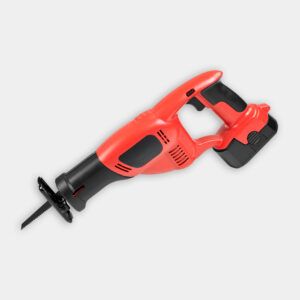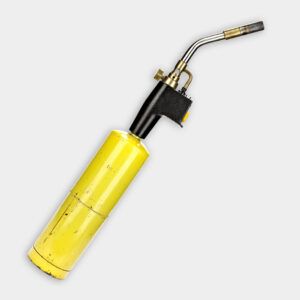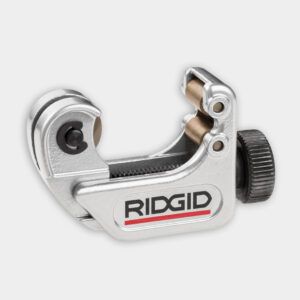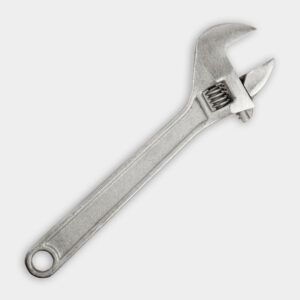We may be compensated if you purchase through links on our website. Our team is committed to delivering honest, objective, and independent reviews on home products and services.
Air that gets trapped in hot water heating systems can leave homeowners in the cold, but you can remedy this issue in just a few simple steps. Installing an air valve for a hot water heating system can prevent air from getting trapped so that your hot water heater can continue working efficiently. Read how to install an air valve in our step-by-step guide below, and watch the video above for tips from This Old House plumbing and heating contractor Richard Trethewey.
The Problem of Trapped Air in a Hot Water Heating System
Air that gets trapped in a hot water heating system can cause several issues. The air valve you install can prevent air from getting trapped, and keep your hot water flowing to all parts of your home. Below are several problems that trapped air can cause:
- Increased wear on system components
- Noisy pipes and radiators
- Reduced heating efficiency
- Uneven heating throughout the home
Types of Air Valves
Air valves, also known as air separators or air eliminators, are available in several models and styles. These include automatic air vents, microbubble air separators, and combination air and dirt separators
Automatic air vents are the most common model, and use a float to release trapped air. Microbubble air separators capture tiny air bubbles, and a combination of air and dirt separators removes both air and particulate matter. Each type has its advantages and disadvantages, and the best choice for you depends on your specific system requirements and budget.
Sizing Considerations
Consider the size of your heating system and the flow rate of water in your system when deciding which size air valve is right for you. Consult with a professional or refer to manufacturer guidelines to help you make this choice. Consider the materials the air valve is made of, such as brass or stainless steel, to make sure that it’s compatible with your heating system.
Tools and Materials Needed
You’ll need the tools and materials below to install an air valve:
- Adjustable wrench
- Air value
- Copper pipe and fittings
- Pipe brushes
- Propane torch
- Rags
- Reciprocating saw
- Solder and flux
- Tubing cutter
Safety Precautions When Installing Air Valves
Working with hot water heating systems involves potential risks. Take the safety precautions below.
- Allow the system to cool completely before you start work.
- Avoid inhaling fumes from soldering and flux.
- Keep a fire extinguisher nearby when you’re soldering.
- Properly ventilate the work area.
- Turn off the power to the boiler before you begin work.
- Wear protective gear, such as gloves and safety glasses.
Step-by-Step Air Valve for a Hot Water Heater Installation Process
Follow the steps below to install an air valve for a hot water heating system:
1. Shut Off the System
Turn off the water supply to the boiler and allow the system to cool completely to keep yourself safe and prevent water damage.
2. Select the Installation Location
Choose an appropriate location for the air valve. This should probably be on the main supply line, just after the boiler and before any branches in the system. The valve can capture air from the entire system effectively at this location. Make sure you can easily access the valve for future maintenance tasks, and orient the valve according to the manufacturer’s instructions.
3. Cut the Pipe
Once you’ve designated your installation location, use a reciprocating saw to cut out a section of pipe. The section you cut should be slightly larger than the air valve so that the pieces can easily fit together. Wear safety goggles to protect your eyes from metal shavings.
4. Prepare the Connections
Clean the cut ends of the pipe and the fittings on the air valve. Apply flux to these areas for a strong solder bond and a watertight seal. Remove any debris or oxidation from the pipe ends with a pipe brush or sandpaper before you apply the flux.
5. Install the Air Valve
Orient the air valve according to the manufacturer’s directions and put it in place. Align the valve with the pipe ends, and make sure it sits snugly in place without gaps.
6. Solder the Connections
Use a propane torch to heat the pipe and fittings, then apply solder to create a secure, watertight seal. Be careful not to overheat the valve, as this could damage internal components. Apply the flame evenly around the pipe joint, and touch the solder to the opposite side of the heat source to make sure it flows smoothly into the gap.
7. Test the Installation
Once the solder has cooled, slowly turn the water supply back on and check for leaks. If everything is secure, turn on the boiler and circulator pump to allow any trapped air to escape through the valve you’ve just installed. Listen for any unusual noises or signs that air might be escaping. Tighten connections if necessary.
Common Issues and Solutions After an Air Valve Installation
You may encounter problems with your valve or heating system even after you complete your installation. Below are some ways to correct common issues:
- If the valve is constantly releasing water, you may need to replace it.
- Uneven heating might require you to balance the system.
- Unusual noises in the system might mean air is trapped elsewhere.
Consult a heating professional to diagnose and solve persistent or complex issues.




